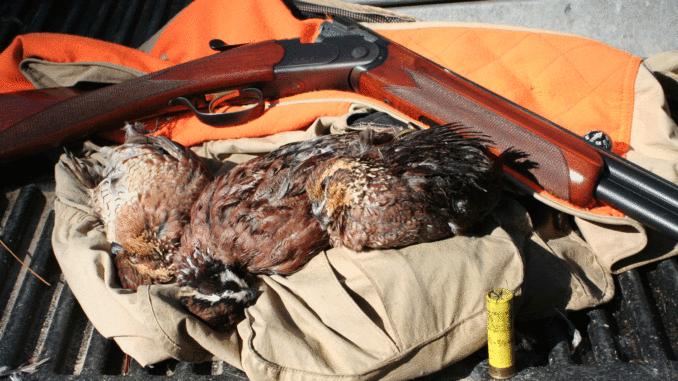
Don’t pass up the preserve ‘option’ if you’ve got a hankering for February quail.
At one time or other, most bird hunters said, “I wouldn’t think of hunting at a hunting preserve.”
Unfortunately, chasing wild quail, even in South Carolina, is no longer a very productive outing. But plenty of shooting preserves dot our landscape, including public shooting venues, semi-private clubs and private plantations.
Guaranteeing more bird contacts is important in certain circumstances, such as introducing young dogs to live birds, finishing started dogs, introducing youngsters to wing-shooting, providing a quick getaway for bird-dog owning city dwellers between their real hunting trips, and lots of other good reasons justify visiting a “stocked area.”
February is an ideal time to work birds that are not wild.
Several species of wild birds have historically challenged hunters living east of the Mississippi River. In New England, it’s grouse, woodcock and pheasants. In the Mid-Atlantic states, add quail into the mix. In the South, bobwhite quail are king, with a few grouse in the mountains and a few seasonal flights of woodcock added to the mix.
Unfortunately, wild pheasants have almost disappeared from the entire eastern landscape, and the other three species are dramatically reduced from their historic high numbers throughout their ranges.
In South Carolina, old-timers speak longingly of seasons past when coveys of wild quail abounded in the Lowcountry farmlands and piney woods. Ask a seasoned hunter raised in the 1950s, and he’ll wax eloquently about grabbing a shotgun and a handful of shells, wandering through neighborhood fields with the family bird dog. Those fields are mostly gone or grown over, the birds are gone and unfortunately, most of the bird dogs are gone too.
What’s a modern outdoorsman who loves bird dogs and bird hunting but can only afford a week or so each year traveling to wild-bird action, supposed to do? Is he supposed to lock that well-trained hunting machine he feeds kibble twice a day in a kennel the other 51 weeks of the year?
Dog owners can concentrate on bird-dog games or training to keep their best friend challenged and in good shape. Hunt tests, field trials, dog-training clubs — even obedience and agility training — are fun and effective exercise. But most are characterized by a few minutes of hard-charging action followed by hours in the crate waiting for their next turn at the line; it’s certainly not hunting. Pointing dogs and spaniels were born and bred for extended periods of running hard while for searching for, pointing or flushing and then retrieving birds.
Preserve hunting is another part of the answer.
“Put-and-take,” “early release” and supplemental stocking are ways it’s done around the country, and the price of admission ranges from pretty reasonable to outrageously expensive. All three methods provide more gamebird contacts for hunters and dogs. The difference is mainly how realistic and similar the experience is to wild-bird hunting in features such as surroundings, the wildness and strength of the stocked birds and incidental luxuries provided.
A typical “put-and-take” southern quail-hunting experience will be much like those offered at the Tall Pines Quail Hunting preserve in Varnville. Joe Mixon runs this low-overhead venue located south of Hampton. Just before a booked hunt, Mixon “plants” coveys of birds for hunters and dogs to later discover.
Many of South Carolina’s public shooting preserves accommodate hunters who bring their own dogs, in addition to providing fully guided hunts with trained dogs, but Mixon caters especially to dog owners, giving them a discount and the freedom to hunt unguided on his property. He also has a kennel of pointers, German shorthairs, Brittanies and English setters, as well as a dog handler and guide for those wanting fully guided hunts.
Hunts begin before the clients arrive, with Mixon and his guide heading to the fields with a stock of 15 quail for each of the two or three guns that are hunting. Quail are acquired from a distributor weekly and added to Mixon’s.s large flight pen and shelter. On the morning of the hunt, using a unique system of gates, Mixon funnels the birds into a catch box, then trasfers them into mesh bags for their trip to the field.
Once in the field, he and his guide strategically disperse the birds into hastily prepared “nests” in the 120 acres of prime habitat on the 400-acre property — traditional piney woods, broomsedge and forbs where native wild quail flourished in those glory years past. The nests are actually native grasses and weeds bunched into a loose pile with a space in the center and a top of additional grass. The dizzying process involves wind-milling the mesh bags, which disorients the birds long enough to deposit them into the nests but allows them to recover in time to fly aggressively when pointed by the dogs and then flushed.
A second and third option that make hunts progressively more challenging for dogs and hunters is either dizzying the birds and releasing them directly into the cover or just allowing the birds to walk out of transporting boxes directly into cover. These two options, especially the last one, are most enjoyable for experienced hunters with proficient dogs.
Once hunters are afield — after licenses are checked and a safety briefing finished — the dogs are released, often two at a time, to do their thing: find and point birds. Probably the most-impressive aspect of the any upland hunt is good dog work, as the hard-charging pointers range at a gallop through the coverts, only to freeze almost in mid-air when they cross scent of a live bird or two. Predictably, the running mate freezes in a “backing ” position, honoring the find, and they both suspend, frozen in time, until the hunters and guide come into position.
The flush, unlike wild-bird hunting, erupts as the guide scatters the nest with a kick but, with good flying birds, the covey rise is still impressive and rarely results in more than a couple kills in the air. After retrieves and congratulations or snide remarks, it’s off to follow up singles and then on to the other coveys.
Some outfitters hunt in very easy cover, pretty much open fields, while some venues offers much more challenging cover or a choice between easy and harder. A 2-gun, 30-bird hunt takes two or three hours depending on the cover, the shooters’ acumen and number of dogs used. Hunters can expect to kill most of their released birds on “put-and-take” outings with reasonable shooting.
At the other end of the spectrum are the places like Turkey Hill Plantation and other mega-acreage, membership-only facilities where the hunter’s every need is met. They may have sporting clays to warm up the shooting eye, a lunch, dinner or both, carry you from covert to covert in a wagon and sometimes even give you a room for the night with your dog. These places have so many acres of prime habitat that they retain a year-round population of wild quail, but not nearly enough to satisfy their members needs. They use early-release stocking of thousands of birds beginning in September and October to acclimate them to the wild, and then use supplemental stocking throughout the season. They also feed their birds throughout the season.
Early-release and supplemental stocking are much more costly since the preserves often harvest less than 25 percent of the stocked birds.
Places like the Clinton House fall in between the private clubs and the places with low overhead. They cater to larger groups and corporate outings with a full range of activities and also handle the basic 2-gun hunts.
Depending on your budget, your appetite for challenge and whether you have a good dog, grab a buddy and your shotgun and make a trip to one of the many shooting preserves this month. It’s not real hunting, but in the more-challenging venues it approaches it, and it really is a lot of fun in the outdoors. Plus, you’ll get to take home some quail for dinner.
DESTINATION INFORMATION
WHEN TO GO — The preserve hunting season opens Oct. 1 and ends March 31, but action is limited early and late by warm water.
PRESERVE REGULATIONS — SCDNR regulations apply to preserves, except that there are no bag limits on pen-raised quail. Regular resident hunting (small-game) license ($12) or a special hunting-preserve license ($8.50) are required.
FINDING A PRESERVE — On-line searches, SCDNR contacts and word-of-mouth provide information on shooting venues in the Palmetto State. A good website is http://www.wingshootingusa.org/. Another listing of licensed shooting preserves open to the public is available from SCDNR by calling 803-734-3609. Guided hunts at low-overhead shooting preserves run about $200. Full-service public preserves are a little more expensive, while private luxury hunting clubs are very expensive. Here are a few examples of shooting preserves and some brief information about each:
• Tall Pines Quail Hunting, Varnville, J.E. Mixon, 803-943-4617. Very good quail cover. Unguided hunting with your own dog a specialty. Guided hunts available.
• Springrove Shooting Preserve, St. Stephens, David Shealy, 843-567-3830. Hunters’ dogs are welcome but the hunt will still be guided.
• River Bend, Inman, Ralph Brendle, 864-592-1348. A full-service private resort with memberships available and a variety of hunt options.
• Clinton House Plantation, Clinton, Mike Johnson, 864-833-5477. A full-service public hunting resort with upland hunting and shooting options. Memberships available.
• Back Woods Quail Club, Georgetown, Rick Hemmingway, 843-546-1466. A full-service club open to the public. Full-day or half-day hunts available.
• Black’s Camps/Black Briar Preserve, Cross, Allan Weiss or Kevin Davis, 843-753-2231. Strong flying birds released from Johnny houses to broomstraw cover.
• Pleasant Hill Plantation, Kathy Willis, 987-2725, Spring Island Hunt Club leased property for upscale wagon hunts and guided walking hunts. Great guide and dogs.
• Turkey Hill Plantation, Ridgeland, Canada Smith, 843-726-8646. Upscale private hunting and shooting club. Early release wagon hunts for quail.
• Gruber’s Hunting Preserve, St. George, Stanley Gruber, 843-563-1159. A full-service hunt club open to the public. Full- or half-day hunts available.
Wherever you go, don’t forget to tip the guide; $20 per person is considered standard for a half-day hunt, although some hunters are more generous when they receive excellent service.

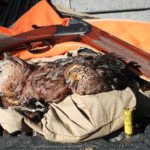
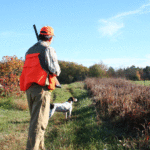
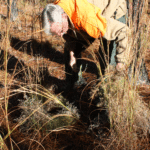
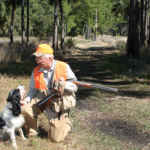
Be the first to comment